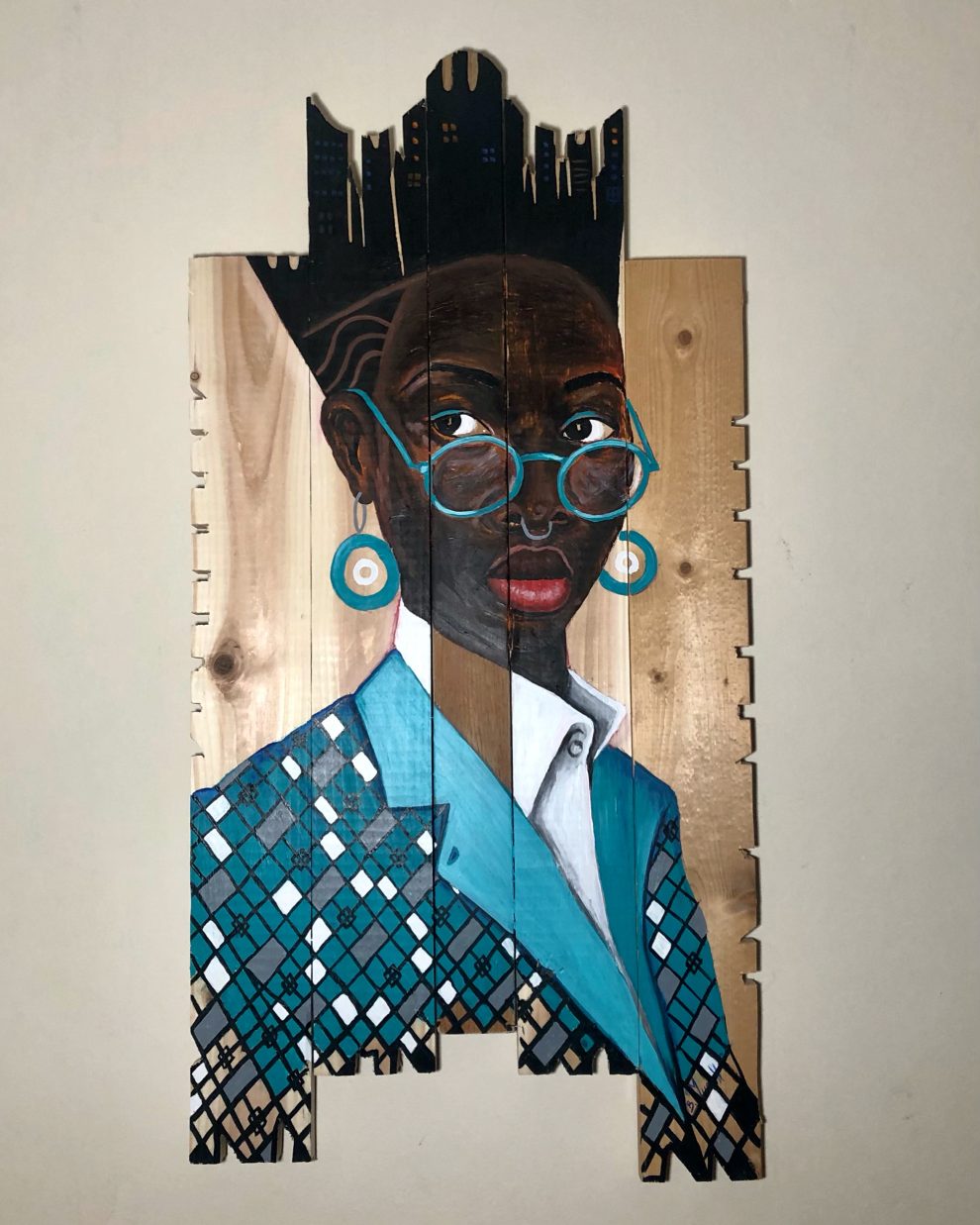A thunderclap doesn’t ask permission to be heard—neither does Musah Swallah. His work lands like weather, not spectacle. There is no slow build, no preamble—only impact. Born in the electric pulse of Accra, Ghana, and now wielding his brush from the cultural furnace of New York, Swallah steps into the global art dialogue not as a newcomer, but as a necessary correction. His paintings do not beg for inclusion in the canon; they confront it—gloriously saturated, unrelentingly alive and forged from the marrow of migration, memory and myth.
In a time when much of contemporary art clings to ironic distance or minimalist detachment, Swallah offers something far more dangerous: feeling. Not the tidy kind, but the unfiltered, borderless, ancestral kind. The kind that does not fit neatly in a frame, because it is already burning through the wall. In a time when global art fairs clamor for the next sanitized “African aesthetic,” Swallah refuses the flattening. Contrarian in nature, his work is neither derivative nor decorative—it is sovereign. Already exhibited at respected institutions such as the N’Namdi Center for Contemporary Art and acquired by discerning private collectors across the United States and West Africa, Swallah’s meteoric ascent speaks not to trend but to a profound thirst for truth that only the most fearless can quench.
The saturated narrative is not only visibly noted—but spiritually as well. This can be readily witnessed in Swallah’s artistic lineage, which is both personal and historical. Trained initially through community mentorship in Ghana, he grew up surrounded by the folkloric rhythm of color and story. His visual language— shaped by a fusion of Akan tradition, Islamic pattern and pan-African urgency—conjures the feeling of navigating Accra’s Makola Market at high noon: vibrant, sacred and unrelenting. Yet, this is no exoticism. His work is not a souvenir for Western comfort. It is a living archive of culture, exile, joy and resistance. It demands fluency in both geography and emotion.
What distinguishes Swallah from his contemporaries is his ability to fuse ancestral memory with modern dislocation. His figures—often surrounded by bold, textural grounds— are neither icons nor victims. They are meditative presences, often rendered with an intensity that borders on the mythic. Their eyes meet the viewers with unsettling directness, inviting neither pity nor praise, only witness. Each canvas becomes a reckoning—a call to recognize the intellectual depth and emotional charge embedded in diasporic life.
In recent months, collectors and curators alike have begun to take notice. His solo exhibitions in Michigan and his participation in panels on African visual culture have led to serious conversations about museum acquisitions. There is growing interest in positioning his work not only in contemporary galleries but within the context of global postcolonial discourse. Swallah’s art offers more than aesthetic pleasure—it provides visual theory. It interrogates what it means to carry homeland in the body while building a legacy in foreign soil.
Now, as he prepares to embark on a new body of work exploring abstraction, Swallah does not abandon figuration; rather, he expands it. These abstractions are not evasions but meditations—gestural invocations rooted in the same spiritual terrain that defined his earlier work. In this next chapter, he paints not only bodies but the spaces between them—the emotional architecture of belonging, migration and memory.
In the broader dialogue of contemporary African art, Swallah stands among a new vanguard unafraid to confront the aesthetic expectation of the Western gaze. He does not merely “represent” Ghana. He redefines it—layer by layer, color by searing color. His work pulses with the urgency of Kehinde Wiley, the soul-deep lyricism of Amoako Boafo and the philosophical edge of El Anatsui, while remaining entirely, unmistakably his own.
Musah Swallah is not asking to be included. He is building his own canon—one canvas at a time, each painting a sacred text in the language of fi re, rhythm and truth.
For a deeper look at his evolving body of work, including forthcoming exhibitions and his new exploration into abstraction, visit avalonashley.com and thecuratedreserve.com—portals for those who seek the sublime, the ferocious and the undeniably real.








